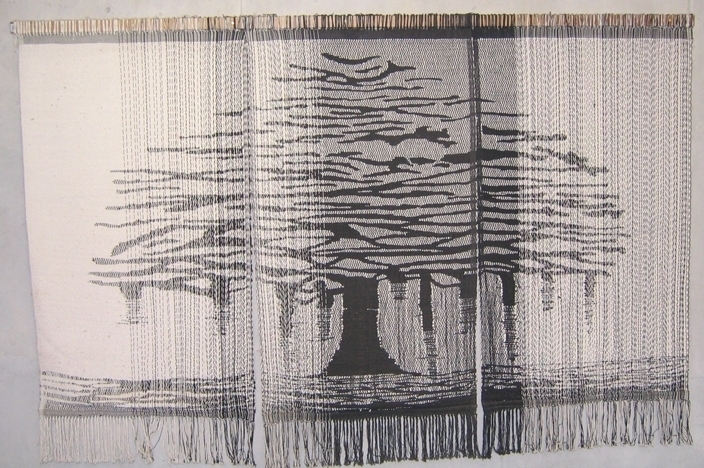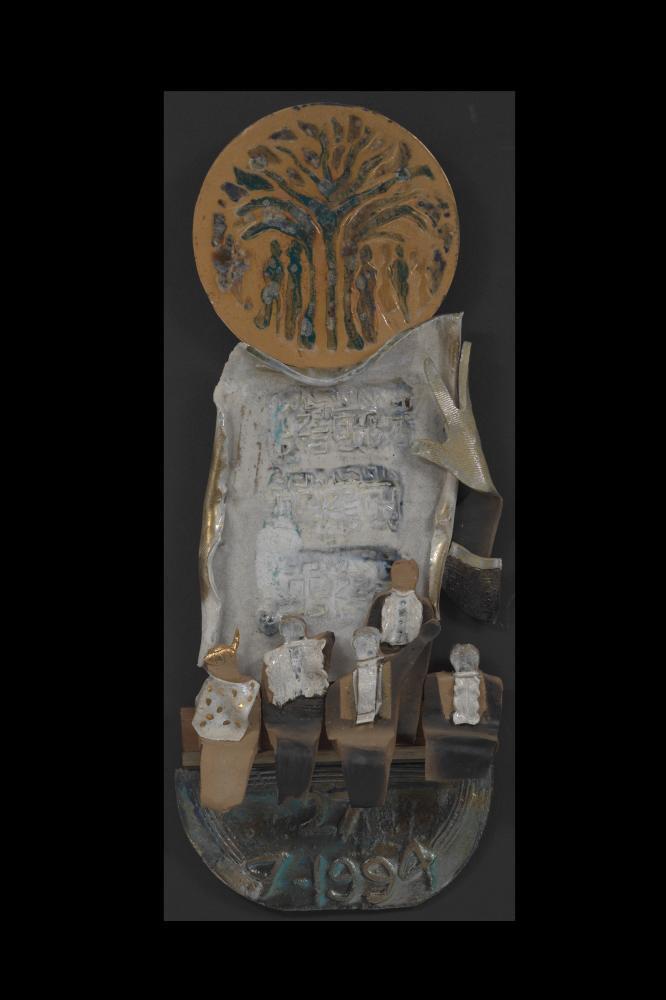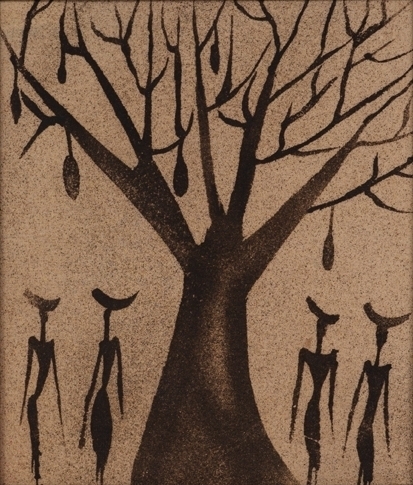Justice under a tree
| Description: | “Justice under a tree” is a recurring visual metaphor at the Constitutional Court of South Africa, communicated through art. The Court logo shows a tree sheltering a diverse coming together of humans of all races, sexes, and genders. Trees also appear in the architectural design of the Court's building, and in many artworks in the CCAC. The idea of justice under a tree comes from traditional African societies’ rituals where people gather in the open, often under trees, to resolve disputes. An imbizo, an isiXhosa word that has an equivalent in the terms kgotla and lekgotla of the Sotho and Tswana communities of southern Africa, is a participatory and transparent meeting of people of a community to discuss important issues, and to serve as a judicial court. The image of a tree roots the practice of seeking justice as indigenous to southern Africa. It is a deliberate shift away from the symbols of colonial and apartheid laws. Like a tree, the Constitution is a source of protection for all, indicating a new value-based ethos and culture after apartheid. As much as the tree protects the people, the people also look after it, thereby establishing an interconnected relationship between the Constitution and its governing subjects, and between nature and humankind. The Constitutional Court building gives an identity to the Constitution, while being emblematic of the historical struggle for human rights and standing as a remembrance of past injustices on Constitution Hill. The Court foyer gives the idea of standing in the clearing of a forest: slanted pillars decorated with mosaic mimic trees, while woven wire chandeliers are shaped as leaves, and skylights let in dappled sunlight throughout the day. The courtroom, like the foyer, creates the sense of meeting in a natural amphitheatre with a shadow-patterned carpet. The judges' bench is adorned with cowhides referencing customary adornment. The constitutional tree thus marks a place of meeting, judgment and our broad interconnection. |














